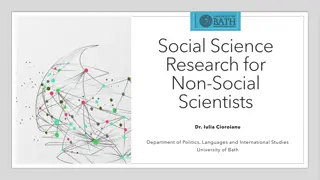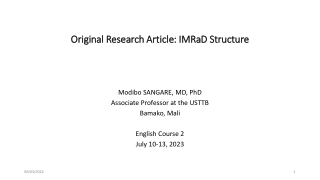Importance of Currency of Sources in Research: Enhancing Your Academic Pursuit
Recognizing the significance of currency in sources furthers academic research by ensuring relevance, quality, and credibility. Seminal works hold crucial importance in shaping understandings and methodologies. Sources include primary and secondary texts, data, and scholarly articles, each serving unique research purposes.
Download Presentation
Please find below an Image/Link to download the presentation.
The content on the website is provided AS IS for your information and personal use only. It may not be sold, licensed, or shared on other websites without obtaining consent from the author. Download presentation by click this link. If you encounter any issues during the download, it is possible that the publisher has removed the file from their server.
Presentation Transcript
Importance of Currency of Sources in Research To find the most relevant information for your topic. To ensure the quality and reliability of your research. To find expert views, opinions, and research. To weed out unreliable, biased, outdated, or incorrect information. To make sure that you get the information that your professor is seeking.
Why are Seminal works important today? These works describe a study that changes our understanding of a topic. They describe a new useful research method. Seminal works are referred to time-and-time again in research and are frequently cited in other articles, journals, books, and dissertations. They tend to be the major studies that everyone discusses.
What are Sources? Definition: texts, scholarly articles, letters, diaries, films, works of art, data from experiments, numerical data, surveys, or interviews.
Types of Sources: primary v. secondary sources Definition: Primary sources They are first-hand account of an event or topic. Primary sources give direct evidence about people, events, or phenomena being researched. These sources were created by people or things that were there at the time or event. Films, letters, diaries, interviews
Types of sources: primary v. secondary Definition: Secondary sources Describes, analyzes, interprets, or discusses the information from primary sources. Often used in scholarship and research. Scholarly articles written by other scholars abut literary texts

















































